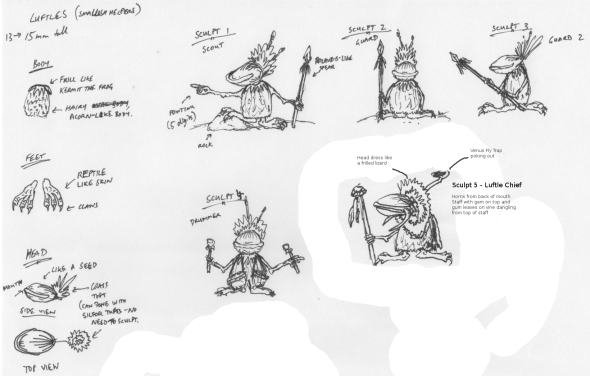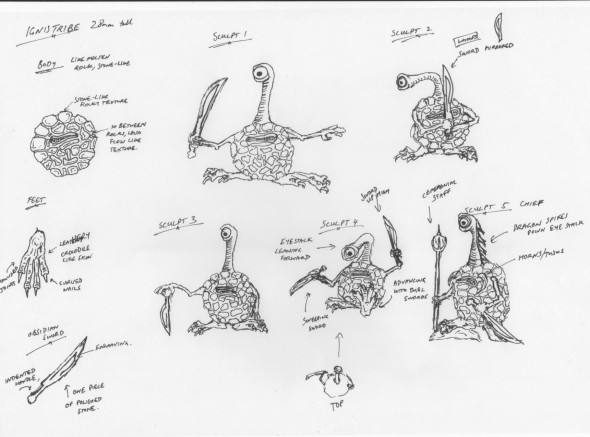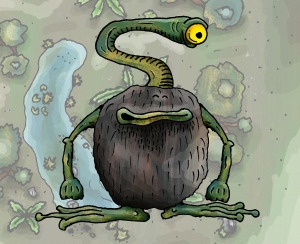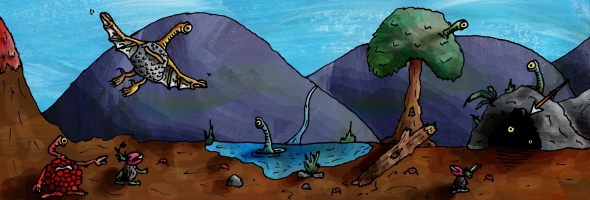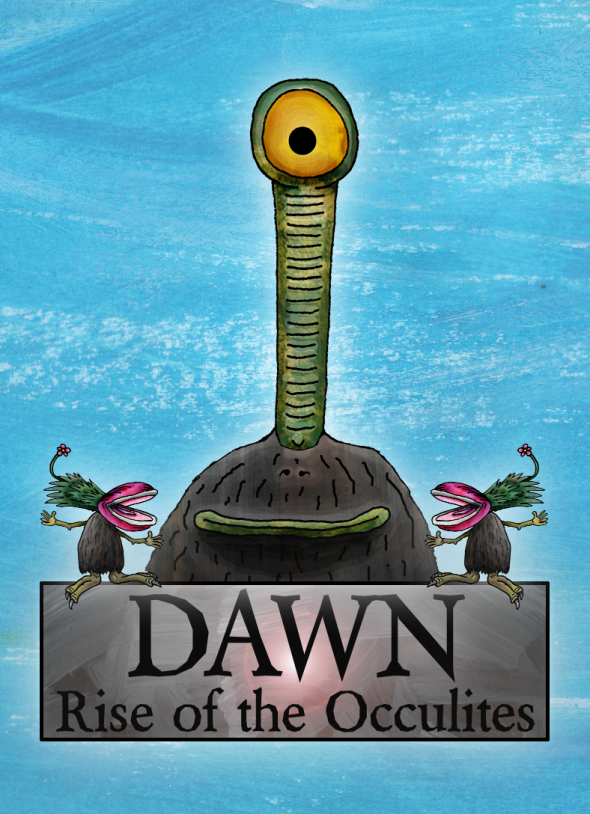How to Play Sungem Run! – A Rise of the Occulites Game
G’day guys,
While I work on finishing off the packaging art for Dawn and its expansions and since it is my wedding anniversary today, my wife and I wanted to share the How to Play video for a game that we both co-designed and set in the Rise of the Occulites universe called Sungem Run!
It is a tense, deduction game that uses dice for 2-8 players (or 2-13 with expansions) that plays in 10-30 minutes (depending on player count and skill).
There are several ways to play, with enormous re playability and more in development for the future. It has been in development for over a year and a half now and is set directly after the storyline in Dawn. The Tribal Chiefs of the Tribes that didn’t collect enough Sungems to heat their cave over the Long Dark, don’t want to just give up. So they quickly send out their four members to a nearby Podmothine to raid its Sungems under the cover of darkness. The Chiefs stay back to guard their Home Caves, but your Tribe is not the only one with this idea. If your Tribe is discovered raiding the Podmothine, your Home Cave will be swamped with other Tribes and your Chief will not be able to stop them raiding it.
We are extremely proud of Sungem Run! and have tested it thoroughly with many ages and backgrounds. Sungem Run! has developed into something really special and as such we are looking at Kickstarting this fantastic game around the middle of the year and would love your support. So check out the video and let us know what you think.
All the best and take care,
Cheers,
Ben.
Floris Tribe Expansion Box Lid
G’day guys,
The Kickstarter is SOOOOO close now. Just waiting for a confirmation of date. Extremely exciting times around here.
So I thought to tide you all over, I would upload the proposed box lid for the Floris Tribe Expansion. This is not 100% final and could change before production, but I am very happy with how it turned out. Feel free to use it as a screen wallpaper to brighten up your day with Floris-ey goodness. 🙂
I would love to hear what you guys think of it. Also, if you have any questions about the game, now is a great time to ask them!
Cheers,
Ben.
Concept Sketches of the Tribes for “Dawn – Rise of the Occulites”
G’day guys,
I just wanted to upload some rough concept sketches for the five Occulite Tribes (Palaudis, Floris, Hydris, Nimbus & Ignis) and the helper creatures the Luftles (which will now also be a fully playable tribe in Dawn in addition to being able to recruit them for an Occulite tribe)
These are the sketches that I have sent Bob to base his sculpts off from. Some will change slightly when the get sculpted, due to the placement of mould lines and practicality. The first three tribes being sculpted are the Palaudis, the Floris and the Luftles. Not too long after that, we will get the Ignis, Hydris and Nimbus ones done too, then after that, the game’s rulebook will be released.
I hope you enjoy this little insight to how this project is growing and developing.
Which tribe is your favourite? Please feel free to post below. 🙂
Cheers,
Ben.
What’s on the horizon? An Occulite Update.
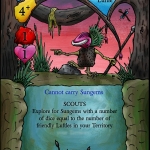
First of all, I wanted to just say thank you to all those who voted for how they would like to see “Dawn – Rise of the Occulites” to develop.
In the end it was a very close run race, with around 18% difference in the voting. As you may have seen, the miniatures version won out in the voting, which is both exciting and daunting. It basically means that I will be looking into getting the tribes and their allies (the Luftles) sculpted up in the future. I am exploring a few options with this, but if you think you might have any suggestions or know someone that would do an awesome job and would be seriously interested in helping sculpt up the line, please drop me an email on ben.boersma@gmail.com
So as you may know I have been working on several Rise of the Occulites titles. Three of these you would have been aware of, but there is a fourth that has joined the ranks. This fourth game is set in between Dawn and Dusk and is a card game. The roots of this game go back 8 years to my first serious design attempt – a game called “Muppets”. I learnt very quickly that the theme wouldn’t fly (despite being awesome if you are a Muppet Show fan!) and so while the game still did the rounds on our gaming table, the ideas behind it lay dormant for a good 7 years. Late last year I began to overhaul the game, retheming it to the Rise of the Occulites world and I’ve been very excited by the results. I am now just working on the art side of things – illustrating all the cards – which I am greatly enjoying.
Here’s a sneak peek of one of the final versions of the cards for “Race to Dawn” – I hope you enjoy it. 🙂
As an update on the other two games – Dusk and Time of the Occulites, well Dusk is moving nicely and I am illustrating the tiles/cards and pieces for that at the moment. It is almost fully playtested and may turn out to be the first release, depending on how quickly things get moving on the miniatures and which game I finish the art for first.
Here is a sneak peek of an early prototype of the modular terrain tiles for Dusk – a Lake/Waterway tile. 🙂 *The art may change
I have pages and pages and pages of notes for Time of the Occulites – but unlike its name, I have not had much time to spend on it. This game will be epic when finished, but is a long way off yet.
If there’s anything in particular you’d like to know, or you have any feedback or comments, please post below and thanks for reading!
Cheers,
Ben.
Developer Diary 2 – Evolutionary Options
Well, it looks like the Evolutionary Options is the winning choice for the Developer Diary this time around. 🙂
I have tried to ensure that the theme of “Dawn” is not just pasted on, but instead carefully integrated into the mechanics and ideas of the game. I think in this respect, I have achieved this goal. Most actions are resolved around a “Natural Selection Deck” which we will go into in another Developer Diary and tribes will have both “Innate” and “Learned” traits or abilities.
“Innate” traits and abilities are ones that the Occulite are born with and will often be needed for them to survive through the first parts of their life. For example, in our own world, “a salamander raised away from water until long after its siblings begin swimming successfully will swim every bit as well as they the very first time it is placed in the water.” (http://users.rcn.com/jkimball.ma.ultranet/BiologyPages/I/InnateBehavior.html)
“Learned” traits and abilities are ones that the Occulite’s will pick up through life experiences or through their environment. For example, in our world, we learn to drive a car or we learn to play a sport.
In “Dawn”, all Occulites in your tribe will start their lives with an “innate” trait. Nothing can change this or take it away. These are, like most “innate” behaviours in real life, determined by a mixture of their genetics and their environment and are hard-wired into their nervous system. All of these observations have been recorded by Darwin throughout the years and have been very important in cataloguing and understanding the species as a whole.
For example, a member of the Palaudis tribe (pictured below) will start its life with an innate trait called “Traverse Swamp”. This basically means that it suffers no penalties when moving through swamps as it has been genetically conditioned to be able to do so without trouble. As well as innate abilities, each tribe’s genetic code determines what variations in appearance each Occulite has. All Occulites are of the same species, but each tribe variation is a sub-species. The Palaudis Occulite has a greeny brown skin, much like a frog’s, webbed feet and a shaggy, fur covered body. This fur has two benefits, providing some rudimentary hiding ability and holding water, thus cooling down the Occulite or keeping it warm, depending on the weather.
The Hydris tribe (pictured below) has some variation on its appearance. Its skin is also smooth, but is a bluish green and much more streamlined. Their pupils are often larger to take in more light when underwater. They have a dorsal fin to help stabilise their body in the water and fin-like feet which aides their graceful movement through the water. Their innate ability is called “Swim”. It allows them to move freely through bodies of water. It also helps them to cross fast flowing streams and rivers without getting swept away.
So far, there are three other tribes or Occulite sub-species documented by Darwin. The Floris, Nimbus and Ignis tribes. They all have variations of these innate abilities, all having something to do with the type of terrain they are born into.
The actual genetic blueprint of each of these different tribes will be discussed in a future Developer Diary, but it is interesting to note that each tribe will be able to make “Evolutionary Adjustments” to their members when creating a tribe.
“Learned” abilities can be gained by members of your tribe by interacting with their environment and rival tribes. By completing different tasks and different goals within scenarios, your Occulites will start to learn ways to cope with their enemies and their environment.
All Occulites have a bank of “learned” abilities to draw from, but in addition to this, each different type of tribe has their own set of “learned” abilities that are available to them. So choosing to play a Palaudis tribe will require a different play style than say a Floris tribe.
One of the best pieces of advice you can ever be given is “Practise makes perfect”. In our world, you can’t just hop into a car for the first time and expect to be able to drive manual straight away. It takes practise. The same goes for “Dawn”, and this is where I feel it is different from any other game I have played.
Once you have made an Evolutionary Choice, by choosing a “learned” ability for an Occulite, it is added to their profile card. Each “learned” ability has certain requirements for it to become a permanently “learned” ability. For example, lets take the “Eye Beam” learned ability. On the card it has three requirements. The first is that the Occulite is holding a Sungem. The second is to discard three “Boost” cards. The third is to perform a successful Awareness Test. Once those three requirements have been completed, the Occulite is able to permanently use that ability. If an Occulite is killed before it “learns” the ability, it is lost and removed from the profile card (but may be selected again at a later time when learning a new ability).
If an Occulite is killed after is has successfully “learnt” the ability, then when it is reborn in its cave (discussed in a later Developer Diary), it will still have the ability.
This has been a look at some of the Evolutionary Options available to your Occulites in “Dawn”. I hope you have enjoyed it and that you’ll continue following “The Rise of the Occulites”.
If you have any questions or comments, feel free to add them below. 🙂
Cheers,
Ben.
Dawn Card Back Art
Just a very quick update today – sharing the card back art for Dawn.
I think card back art should be simple, yet clear. Eye catching, but not crowded. I hope I’ve achieved that here.
Thanks to everyone that is following along here – its really encouraging to see the hit counter go up and the comments come in. It would be great to hear what you would like to find out next. Just add a comment to the bottom of the page stating what you’d like to know more about and I’ll make it my next Developer Diary entry. The options are “The Genetic Blueprint of an Occulite”, “The Natural Selection Deck” or “The Evolutionary Steps available to your Tribe”.
Cheers,
Ben.
“Dawn” – Rise of the Occulites Board Tiles Preview
Welcome to the first game developer’s diary on “Dawn” – Rise of the Occulites.
Let me be honest and upfront with you all from the very start. I have primarily played miniatures games in the past. The openness of the board and freedom of movement was always a real plus to me. It meant that the board could look as nice as possible without detracting from the movement the figures would need to make.
However this inherent freedom has its drawbacks as well… Measurement. The use of a simple instrument such as a ruler can cause some very heated arguments. Especially when it comes to moving over things like difficult terrain or bodies of water – it can become quite tricky, discrepancies often arising. I believe with the right attitude and gaming group these problems are not going to raise their head much, but the fact of the matter is, sometimes measuring is fiddly. So as much as I wanted to write Dawn as a miniatures game (and did initially), I decided to go down the boardgame route, streamlining a lot of the fiddliness that had crept into the design.
Designing the boards for Dawn was going to be very heavily influenced by how movement would work in the game. The more traditional approaches to boardgame and wargame boards are squares or hexes. Both of these options seem to be the norm, with D&D stuff preferring squares and wargame stuff preferring hexes.
There are lots of positives to using this type of overlay for your movement across the board and lots of companies excel in doing this really well. But I didn’t think it was right for Dawn…
When using spaces for movement, I feel each space should be clearly defined as to what it is – so that you know what effect that type of terrain has on your figure. When it comes to square and hex overlays, you are at risk of getting one of two undesirable outcomes:
1) Having the terrain pieces conform to squares or hexes – this often makes the terrain look unnatural, blocky or ‘hexey’ (yes I just made that word up). What happens is that so the space is clearly defined as “Water” or “Swamp”, the whole space becomes that terrain. So it has very straight and unnatural edges.
or,
2) Not being clear on what is the deal with each space – this happens when a great board is illustrated, regardless of spaces and then the square overlay or hex overlay is plonked on top. Its this situation that gives you spaces with some Water and some land, a space with different height levels in it. It then becomes necessary to outline the space with a colour that defines that terrain – which I think can detract from the game.
So, what I decided to do for “Dawn” is to not use any of those options. I decided instead, to make the spaces conform to the artwork. This would not only keep the aesthetic of the terrain boards, but would also make it easy to determine what the deal was with each space. Now I’m not saying that this was the best way to do it, or the other ways are wrong (because they aren’t – there’s some fantastic terrain boards that use both options 1 and 2 above) but it was something I wanted to try, and I’m glad I did as I’m really happy with the result.
The only thing that needed to be the same on each board was the edges of the spaces on each side so that the terrain could be easily modular. I achieved this by making sure there was a space separation at 4cm intervals around the board. Then the space overlay was transparently dropped in conforming to the terrain itself, thus creating the spaces in which the Occulites would move.
You can find a sample of one of the terrain tiles below:
I hope you have found this interesting and would love to hear any comments or questions you may have.
Cheers,
Ben.
EDIT: A few people were interested to find out how Line of Sight and Ranged attacks would be influenced by the irregular spaces. A great question, so I have included some brief design notes/discussion below on these two concepts in Dawn.
I’ll give you the abridged version, but it should give you a pretty good idea of which way I’ve gone.
First of all, lets look at Line of Sight (LOS).
LOS is something that can also become quite contentious. I wanted to be able to streamline this to make it more tactical, whilst trying to keep some simplicity about it. I think I’ve achieved this with Dawn fairly well. YMMV of course. 🙂
“Dawn” is a skirmish game, where characters are constantly moving around the board, trying to complete objectives. We make the assumption that because they are moving all the time, they will be able to be spotted at some point during their movement. Therefore, LOS can be drawn to pretty much anywhere on the board. This is a concept that might feel odd at first, but makes sense after playing it. It also helps to stem ambiguous cover rules. I hear you asking me, “Why would you do that? That won’t work! Its too simple!” and if that was the only rule to go with LOS, I might tend to agree with you. For this to make sense, Occulites must be able to take cover… to hide.
The Art of Not Being Seen – You will notice that on the log in the above Swamp tile, there are some yellow mushrooms. Those yellow mushrooms tell us that the log as a whole can be used to conceal or hide a character. This could be via the use of adaptive camouflage, by simply crouching behind it or any other variety of ways. To allow your character to “Hide”, your character must be in a space adjacent to an object that has yellow mushrooms on it, but not adjacent to any enemy character. You may “Hide” by spending the last action of that character’s turn on doing nothing more than staying in that spot OR you may discard a card from your hand that has the Keyword “Hide” on it (this does not cost an action). Any character wishing to attack you in ranged combat, must take an awareness test to see if they can spot you before attacking. A character can, in most cases, move into an adjacent space to a hiding character and attack them without penalty (but there are exceptional characters that can gain high proficiency in “The art of not being seen” that can influence this). There are other methods of “Hiding” that allow you to hide within some objects, but I will not go into that here (basically will be a different mushroom colour to determine the method of hiding available)
Ranged Combat I will go into more detail on in a future developer diary on combat. But I will say that due to Dawn taking place at the start of the Occulite civilisation, there aren’t as many characters that can use ranged attacks. It is something the characters generally need to unlock or “learn” through a campaign. Although one off games allow you to choose characters that can perform eye beams, bow and arrow attacks etc… Using the irregular spaces is just as easy as normal spaces, you just count the shortest path in a straight line from one space to another.
I hope this brief extra look at LOS and Ranged combat has been interesting enough to warrant you coming back to check out the rest of the developer diaries as they are written.
Cheers,
Ben. 🙂





